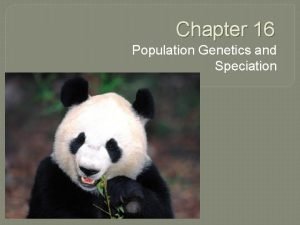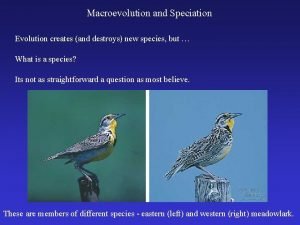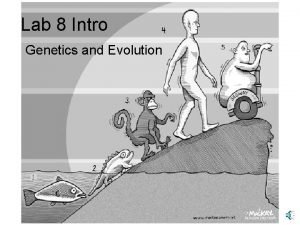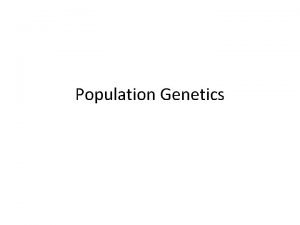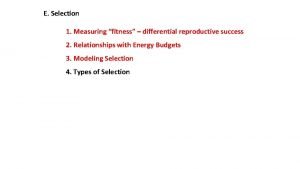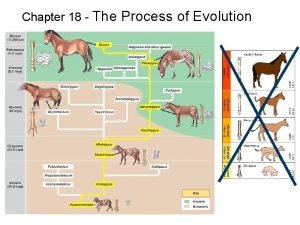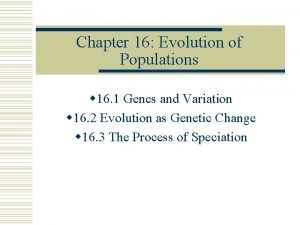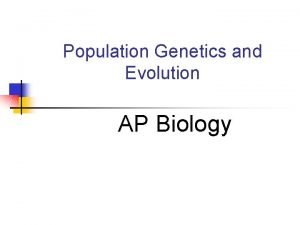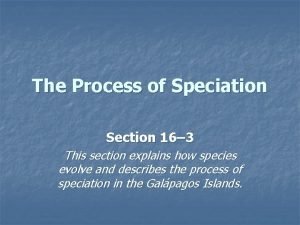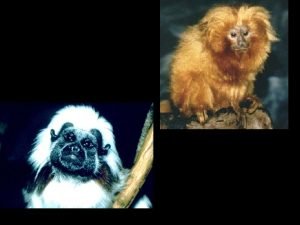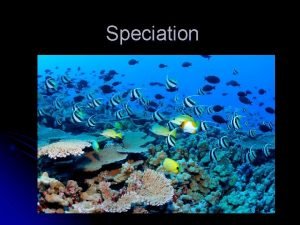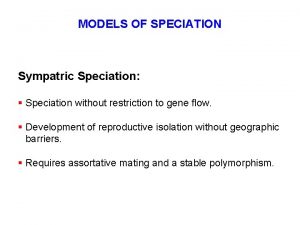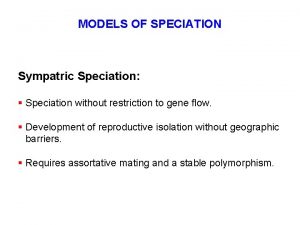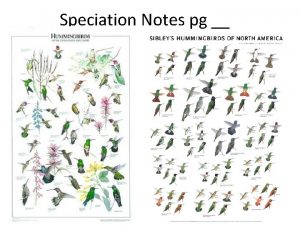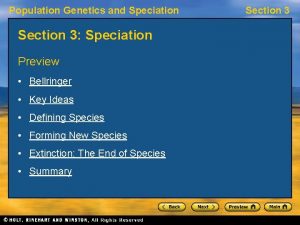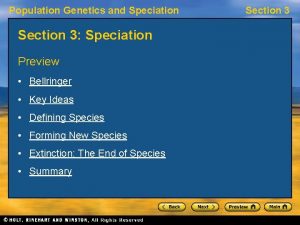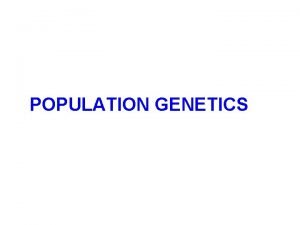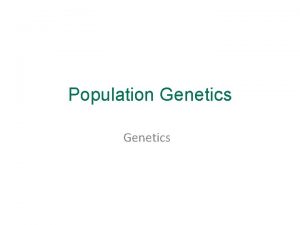Chapter 17 Population Genetics and Speciation Population genetics












- Slides: 12

Chapter 17 Population Genetics and Speciation

• Population genetics – the study of the frequency and interaction of alleles and genes in populations. *Microevolution can be studied by observing changes in the numbers and types of alleles in populations.

• Normal distribution – a line graph showing the general trends in a set of data of which most values are near the mean. – *Biologists study polygenic phenotypes by measuring each individual in the population and then analyzing the distribution of the measurements.

• **Genetic variation and change are measured in terms of the frequency of alleles in the gene pool of a population. • ***The major source of new alleles in a natural population is mutation in germ cells. (The sperm and ova)

• Genetic equilibrium – a state in which the allele frequencies of a population remain in the same ratios from one generation to the next.

Forces of genetic change: • • • 1. Gene flow 2. Nonrandom mating 3. Genetic drift 4. Mutation 5. Natural selection

• *Sexual reproduction creates the possibility that mating pattern or behaviors can influence the gene pool of a population. • **Allele frequencies are more likely to remain stable in large populations than in small populations.

Forming New Species ** Speciation has occurred when the net effects of evolutionary forces result in a population that has unique features and is reproductively isolated. • Reproductive isolation – a state in which a population can no longer interbreed with other populations to produce future generations.

• Subspecies – a taxonomic classification below the level of species; refers to populations that differ from, but can interbreed with, other populations of the same species.

Mechanisms of Isolation • Geography – A physical barrier • Ecological Niche – Role the species has in the environment • Mating Behavior and Timing – Patterns, sounds, actions, etc. • Polyploidy – Cannot pair gametes due to having an extra pair. • Hybridization – When two closely related species have offspring. – Often times the offspring are sterile – Example = mule (offspring of a donkey and horse)

Extinction • Occurs when a species fails to produce any more descendents. ****The species that exist at any time are the net result of both speciation and extinction. -if you think of speciation as like a branch off of a family tree, then extinction is like the loss of one of those branches.

Assignment • • Pg. 417: 7 -11 Pg 418: 19 -20 Pg. 419: 1 -9 Due on Monday
 Population genetics and speciation worksheet answer key
Population genetics and speciation worksheet answer key Isolating mechanism
Isolating mechanism Similar
Similar Chapter 4 section 1 population dynamics answer key
Chapter 4 section 1 population dynamics answer key Population ecology chapter 4 answers
Population ecology chapter 4 answers What is fst
What is fst Modern synthesis
Modern synthesis Population genetics
Population genetics Population genetics
Population genetics Genetics
Genetics Modes of speciation ppt
Modes of speciation ppt Biological species concept
Biological species concept How does speciation occur
How does speciation occur
